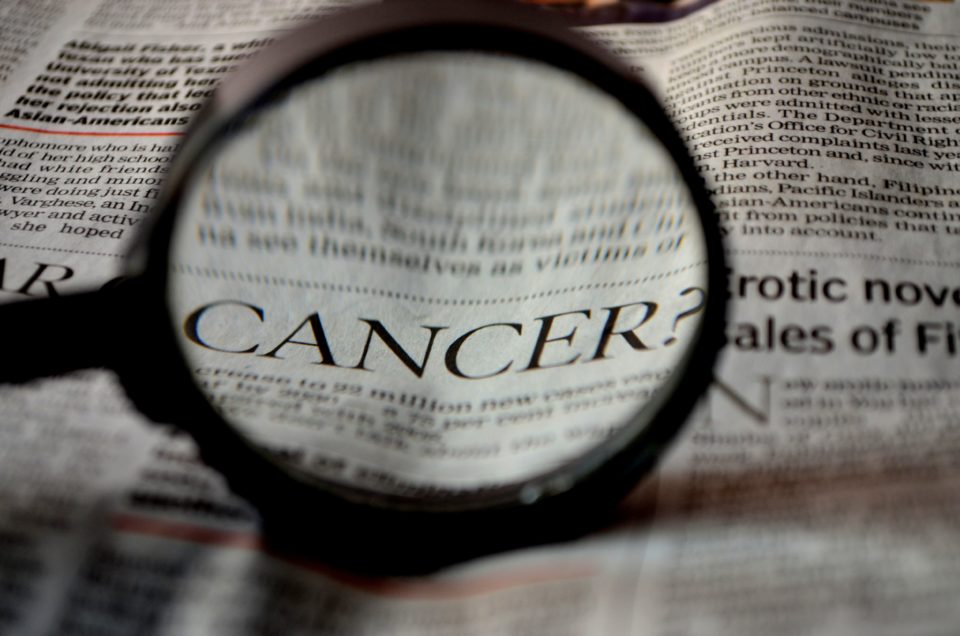Cancer is the abnormal growth of cells in the body. It causes harm to the body by uncontrolled sub-division of the abnormal cells forming tissue lumps known as tumors. It can affect the nervous system, the digestive system, the respiratory system and the circulatory system. According to The World Health Organization, cancer is the second leading cause of death. It accounted for 8.8 million deaths globally.
According to the World Health Organization, the most common cancers in the world are:
- Lung: accounts for 1.69 million deaths
- Liverr: accounts for 788 000 deaths.
- Colorectal: accounts for 774 000 deaths.
- Stomach: accounts for 754 000 deaths
- Breast: accounts for 571 000 deaths.
What causes cancer?
It is caused by abnormal growth of cells that subdivide rapidly and do not die. Every cell in the body has a lifespan. But cancer cells never die, they continue growing and subdividing leading to the formation of a tumor. Tumor formation may be facilitated by the following:
Gene-based on family
It is possible for you to be born with a mutated gene that makes you more susceptible to developing cancer later in life. The faulty gene can be inherited from family members and passed on to other generations.
Carcinogens
These are substances that damage the DNA, hence facilitating the development of cancer. Examples of carcinogens are tobacco, radiations, asbestos, x-rays and the sun. Exposure to these carcinogens leads to the formation of free radicals that steal electrons from body molecules. In the process, the cells are damaged impairing their normal functionality.
Gene- DNA type
Four genes control cell division under normal circumstances. Oncogenes will tell a cell when to divide. The tumor suppressor will tell the cell when not to divide. The suicide genes will tell the cell when to kill itself and the DNA-repair gene commands the cell to repair harmed DNA.
It occurs when a mutation in the above cells occur. The cancer cells divide uncontrollably and inhibit repair of damaged DNA.
Individual cancers
Stomach cancer
What is stomach cancer?
It starts in the mucus-producing cells along the stomach lining. The most common type of stomach cancer is experienced near the gastroesophageal junction. This is where the opening of the stomach meets the lower end of the esophagus.
What are the symptoms?
- Stomach pain
- Persistent nausea
- Fatigue
- Persistent indigestion
- Persistent vomiting
- Severe and persistent heartburns
- Feeling full after eating small amounts of food
The above symptoms can be due to other gut diseases such as ulcers or other cancers. If they persist one should see a doctor immediately for proper diagnosis.
What are the causes?
It occurs when there is a mutation a cell’s DNA causing abnormal subdivision and growth. Stomach cancer can be facilitated by the presence of gastrointestinal reflux disease. It is also associated with smoking and obesity. It is also tied to high intake of salted and smoked foods.
Preventive measures
You can prevent the illness from developing by making simple lifestyle changes. For example:
- Eat more fruits and vegetables
- Exercise more
- Avoid smoked food and minimize salt quantity in your food
- Quit smoking
Which are the treatment options?
It is treatable using either of the following methods
- Chemotherapy
- Radiation therapy
- Surgery
You can recover from the illness when the diagnosis is made early enough.
Breast cancer
It is common among women and is the second leading cause of death after lung cancer. Over the decades, diagnosis of breast cancer has improved which has led to more breast cancer survivors. Screening is the best method to mitigate the risk of developing cancer.
What are the symptoms?
The first common sign of is a lump in the breast. In addition to a lump you can also witness the following symptoms:
- Inverted nipple.
- Change in shape and size of the breast.
- Rash around the nipples.
- Discharge from either of the nipples.
- Persistent pain in the breast or armpits.
- Peeling of the skin around either of the nipples or breast.
Even though not all lumps are cancerous, it is wise to see a doctor for proper diagnosis.
Which are the stages of breast cancer?
It can occur in five stages.
- Stage 0: Cells are in a duct and have not affected the surrounding tissues
- In stage 1: the tumor is around 2 cm across and has not affected any lymph nodes.
- Stage 2: It has started spreading to nearby nodes and is 2 cm across.
- At stage 3: the tumor is now 5 cm across and chances are it has affected some lymph nodes.
- Stage 4: cancer has spread to other organs.
What are the causes of?
Uncontrolled growth and sub-division of cells causes it.The illness usually starts in the inner lining of milk ducts and spreads as it progresses.
Which are the risk factors?
- Age: Chances of developing cancer as a young adult are less as compared to the elderly.
- Genetics: mutated genes pass from one member of a family to another. Women who carry the TP53 gene have a higher risk of developing the illness.
- Exposure to radiation: Exposure to radiations can further increase breast cancer risk.
- Hormone treatments: Use of oral birth control pills has been cited as one of the risk factors that can lead to breast cancer as they increase estrogen levels.
- Alcohol consumption: heavy alcohol drinking plays a big role. According to Medical News Today, women who indulge in heavy drinking have a higher risk of developing the disease.
- Obesity: Women who are obese have a high risk of developingthe illness due to increased estrogen.
Treatment of breast cancer
Treatment options will vary according to the patient’s age and overall health state. Also, the stage of cancer will play a huge role. Available treatment options include:
- Chemotherapy
- Surgery
- Hormone therapy
- Biology therapy
There exist no sure way to prevent it, but a small change in your daily life can reduce the risk of developing any cancer. You should exercise more, eat more fruits and vegetables, avoid excess consumption of alcohol and also visit the doctor for frequent screening.


